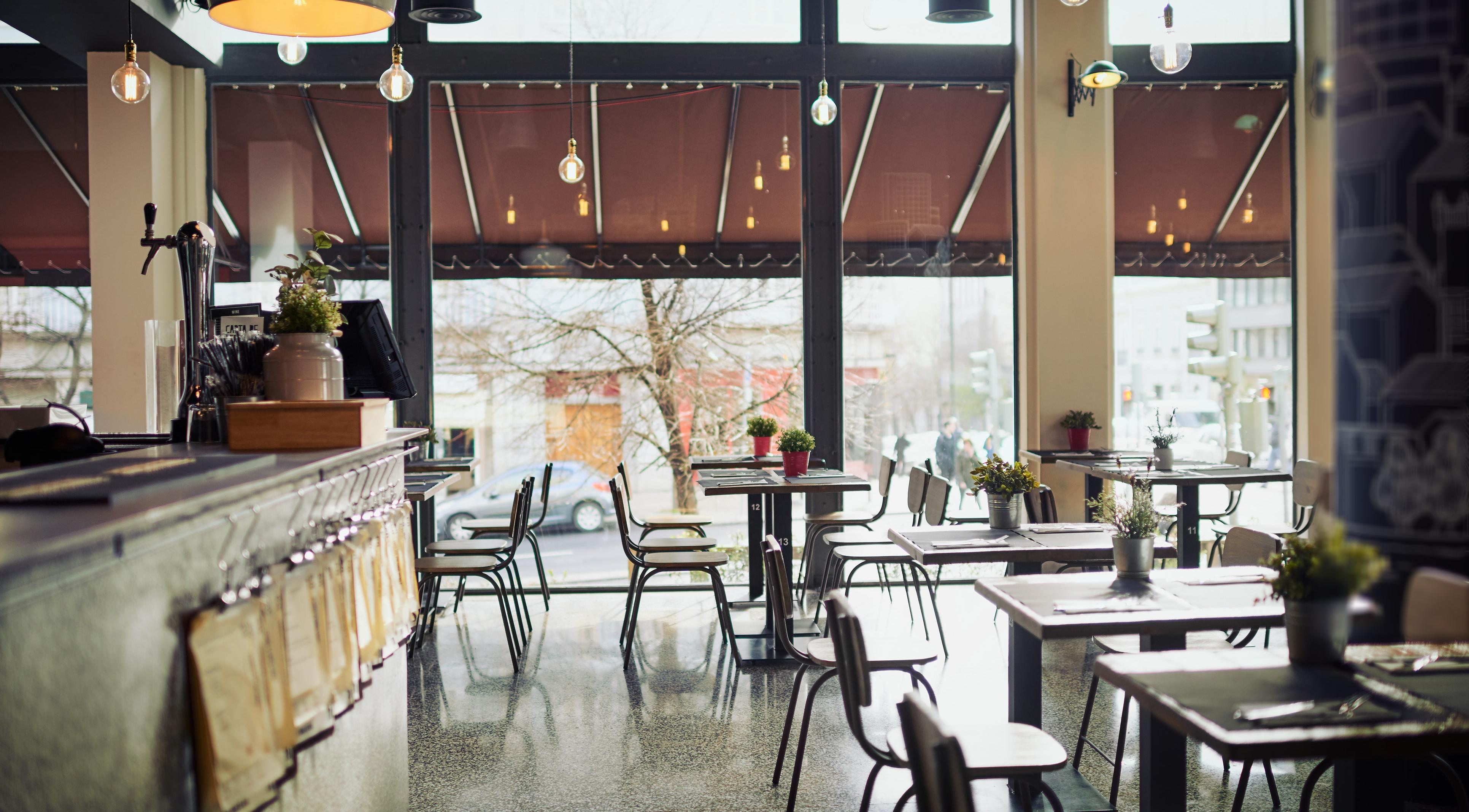
Restaurant Industry: Adaption and Innovation
-
bookmark
-
print

- Keywords:
- covid-19
- farm to market


A lot has changed in the restaurant industry over the past three months. Regarded as essential businesses, many restaurants have been on the front lines of the COVID-19 crisis. But the dynamics of the industry appear to have been altered for the long term.
At BMO‘s 15th annual Global Farm to Market Conference—held as a virtual event for the first time—Ashish Seth, Director of Restaurant Investment Banking, BMO Capital Markets, hosted a panel discussion to assess the current conditions and what’s to come. Joining Ashish on the videoconference were:
- Michael Gregory, U.S. Deputy Chief Economist, BMO Capital Markets.
- Rahul Aggarwal, Partner, Brentwood Associates, a Los Angeles-based private equity firm with several investments in the restaurant industry, including Lazy Dog, Veggie Grill and Blaze Pizza.
- Jessica Curtis, Senior Vice President, Restaurant Practice Leader - Emerging Concepts, CBRE, a leading commercial real estate investment firm.
- Fred LeFranc, Chaos Strategist & Founding Partner, Results Thru Strategy, a Charlotte, North Carolina-based consultancy.
- Clay Dover, CEO, Velvet Taco, a Plano, Texas-based fast-casual franchise with 14 restaurants in four states.
A summary of their discussion follows.
Economic Turmoil
We’re all aware that the U.S. economy is in the midst of a deep recession. The official unemployment rate for April was 14.7%, the worst since record keeping began. But as Gregory pointed out, the real figure could be as much as five percentage points higher when accounting for part-time workers and the self-employed. All told, it’s had a devastating impact on consumers. That’s why even as the economy begins to restart, Gregory doesn’t expect the economic picture to return to normal anytime soon.
“Once the lockdowns start getting lifted, we’re going to see businesses start to reopen, ramp up their production, and hiring is going to come back pretty quickly,” he said. “That will stoke a recovery in consumer spending. However, we think it’s not going to respond as quickly or vigorously as it [normally] would have. There are some lingering factors that are going to weigh on the consumer sector.
“The pre-pandemic unemployment rate was 3.5%,” Gregory added. “We suspect it will settle down to levels double what it was before. And business confidence will take some time to fully recover, and that’s going to weigh on the hiring process as well.”
What does that mean for the restaurant industry? As Gregory pointed out, some surveys suggest that as much as 25% of consumers won’t resume normal activities—particularly ones that involve crowds—until a vaccine is available.
“The fear of gathering is going to affect public transit, concerts and, of course, restaurants,” he said. “Overall, we think that while consumer spending will rebound, there’s enough of these headwinds still impacting the consumer sector so that we might only get back to the pre-pandemic levels of consumer spending by mid-2022. It’s going to be a slower process. The way to characterize it is we went down quickly in the elevator, and now we’re going to climb up the building by the stairs.”
Changing Business Models
For the restaurant industry right now, the only certainty is uncertainty, and that makes it difficult to predict exactly where it’s headed. Still, some changes seem clear.
“Social distancing is going to be here for a long time for a large part of the population,” LeFranc said. “Cautionary behavior, wariness of strangers and frugal spending are going to be here for a long, long time. People are postponing purchases they can easily afford because even though they may still have jobs, they don’t know what’s coming next.”
That uncertainty is why LeFranc said the restaurants that are reopening are adopting a less-is-more approach. “Pare down the menus, focus on high-productivity, high-profit items—things you can make with less staff,” he said. “Possibly consider looking at your restaurant no longer as just a brand in and of itself—which is important—but it’s basically as a little factory, and you’ve gotta get sales per square foot up as high as possible.”
Aggarwal noted that restaurants with drive-thrus have performed well during the pandemic. In a similar vein, for full-service restaurants that previously depended on their dining rooms, outdoor patios will likely be essential, at least in the early stages as consumers ease their way back to restaurants.
“The businesses in full-service that have big patio features, that’s their drive-thru,” Aggarwal said. “The guest feels more comfortable sitting on a patio outdoors rather than being indoors. Concepts that have those are going to be better positioned to weather the storm.”
Full-service restaurants may have to be willing to experiment. LeFranc pointed out that Alinea, a celebrated fine dining establishment in Chicago, began offering takeout meals through Tock to Go, a version of the online reservation system co-founded by Alinea co-owner Nick Kokonas. While the prix fixe to-go meals cost $35 per person, down significantly from the $250 meals Alinea served in its dining room, the restaurant was able to achieve 75% of its pre-pandemic revenue through delivery and takeout.1
“The one thing about this industry is that it’s very creative and innovative,” Le Franc said. “People are setting out their fine china and setting up tablecloths and candles to have that restaurant experience at home. So you can learn that even with a dependence on in-house dining, you can do something great.”
A New Definition of Success
For franchise operators, when and how to reopen is a tricky proposition. Dover said Velvet Taco locations have run the gamut, with restaurants that have opened following local guidelines, others deciding to wait before reopening, and others that can’t open because of local rules. Clay emphasized the importance of not just following guidelines, but to “lean upward.”
“Let the guests see that you’re taking that extra effort,” he said. “We have someone stationed at the front with a spray bottle that sanitizes the door handle.”
Given that the pandemic has made comparing financial results all but impossible, Dover said Velvet Taco has had to adjust its metrics for success. “What is the breakeven for store-level EBITDA, and what sales do we need to hit that?” Dover said. “That becomes our new COVID budget to self-sustain that. We’ve started with skeleton crews. You have to earn labor, you have to be able to show that the sales are there, and we’ve slowly ramped up in some of our restaurants. And we look at it every single day. You have to instill this mindset not only in yourselves as leaders of the organization, but in your multi-unit operators and your GMs. As you’re opening restaurants, that has to be the survival mindset.”
Aggarwal also pointed out the importance of looking beyond the surface numbers. Rules mandating limited dining room capacity may seem unsustainable, but he said that doesn’t account for other factors.
“When you see a regulation like 25% dining room capacity, that does not mean you’re going to do 25% of sales, because a couple of interesting dynamics are happening,” he said. “The business is much more spread out than it was before because [customers now have] pretty flexible schedules, and they’re actually trying to come to restaurants when they don’t think it’s busy. So you’re seeing much more daypart business than we’ve historically seen. And we weren’t full all the time anyway. Those lunch dayparts have the ability to get pretty close to where they were before. A 25% capacity dining room is a lot better than zero.”
End of the Landlord’s Market?
As restaurants struggle for their survival, rent negotiations have been an ongoing challenge. CBRE’s Jessica Curtis noted that as the Paycheck Protection Program funds became available, landlords were expecting to receive their rents paid in full for that eight-week period. That’s because they weren’t aware of some of the subtleties involved, such as a multistate operator being able to afford rent in one location but only a fraction of rent in another.
“At this point, landlords have learned more about restaurants than they ever cared to know, and that’s a really good thing,” Curtis said. “Education has been really critical over the last 60 days to get them to realize things like just because you’re doing 50% of sales doesn’t mean that you can afford to pay 50% of rent going forward.”
What kind of relief landlords are going to get from their lenders will be a key issue. “In the next 30 to 60 days, we’ll see some loosening up of restrictions as it relates to leasing covenants, and maybe some flexibility on the part of those lenders that will eventually trickle down,” Curtis said. “As a result of that, we’re seeing most landlords being willing to do some sort of short-term deal today.”
But restaurants are hesitant to enter into any long-term deals, especially given the warnings about a second wave of COVID-19 impacting the country in the fall and winter months. And that’s changing the relationship dynamic between landlords and their restaurant tenants.
“In 20 years I’ve been doing this it’s been a landlord’s market,” Aggarwal said. “I think for the first time ever this pendulum’s going to swing back to where the tenants are going to dictate terms. I think this could be a renaissance for new store development once we get through the acute phase of the crisis, because landlords are going to get desperate to find quality tenants that are going to be here for the long haul. So step one is get to the other side of this thing and don’t go rushing into any deals, because those deals are probably going to get better.”
The Long Run
While it’s difficult to predict what the future of the restaurant industry will look like, LeFranc pointed out some near-term necessities are emerging.
- “Take care of your employees’ safety and well-being, because they’re the ones that are going to make it happen for you,”
- “Guest engagement. Keep yourself top of mind, don’t be selling as much as showing empathy and contribution to the community you’re in, because that’s going to pay off in a big, big way.
- “Digitization—keep on innovating in that regard. Look at your entire tech stack and see what you can do. It’s not just about digital menu boards and loyalty apps, it also includes back-office functions. Look at the workflow to make sure that’s highly productive as well.”
Aggarwal believes that the more digital-savvy restaurants will emerge as the winners. But as for the details of how business models will change, he said it’s a matter of adapting to changes in consumer behaviors.
One thing is clear—the game has changed. As LeFranc put it: “The old paradigm was, How do we get there from here? The new paradigm is, How do we get here from there? Because the world changed overnight.”
A lot has changed in the restaurant industry over the past three months. Regarded as essential businesses, many restaurants have been on the front lines of the COVID-19 crisis. But the dynamics of the industry appear to have been altered for the long term.
At BMO‘s 15th annual Global Farm to Market Conference—held as a virtual event for the first time—Ashish Seth, Director of Restaurant Investment Banking, BMO Capital Markets, hosted a panel discussion to assess the current conditions and what’s to come. Joining Ashish on the videoconference were:
- Michael Gregory, U.S. Deputy Chief Economist, BMO Capital Markets.
- Rahul Aggarwal, Partner, Brentwood Associates, a Los Angeles-based private equity firm with several investments in the restaurant industry, including Lazy Dog, Veggie Grill and Blaze Pizza.
- Jessica Curtis, Senior Vice President, Restaurant Practice Leader - Emerging Concepts, CBRE, a leading commercial real estate investment firm.
- Fred LeFranc, Chaos Strategist & Founding Partner, Results Thru Strategy, a Charlotte, North Carolina-based consultancy.
- Clay Dover, CEO, Velvet Taco, a Plano, Texas-based fast-casual franchise with 14 restaurants in four states.
A summary of their discussion follows.
Economic Turmoil
We’re all aware that the U.S. economy is in the midst of a deep recession. The official unemployment rate for April was 14.7%, the worst since record keeping began. But as Gregory pointed out, the real figure could be as much as five percentage points higher when accounting for part-time workers and the self-employed. All told, it’s had a devastating impact on consumers. That’s why even as the economy begins to restart, Gregory doesn’t expect the economic picture to return to normal anytime soon.
“Once the lockdowns start getting lifted, we’re going to see businesses start to reopen, ramp up their production, and hiring is going to come back pretty quickly,” he said. “That will stoke a recovery in consumer spending. However, we think it’s not going to respond as quickly or vigorously as it [normally] would have. There are some lingering factors that are going to weigh on the consumer sector.
“The pre-pandemic unemployment rate was 3.5%,” Gregory added. “We suspect it will settle down to levels double what it was before. And business confidence will take some time to fully recover, and that’s going to weigh on the hiring process as well.”
What does that mean for the restaurant industry? As Gregory pointed out, some surveys suggest that as much as 25% of consumers won’t resume normal activities—particularly ones that involve crowds—until a vaccine is available.
“The fear of gathering is going to affect public transit, concerts and, of course, restaurants,” he said. “Overall, we think that while consumer spending will rebound, there’s enough of these headwinds still impacting the consumer sector so that we might only get back to the pre-pandemic levels of consumer spending by mid-2022. It’s going to be a slower process. The way to characterize it is we went down quickly in the elevator, and now we’re going to climb up the building by the stairs.”
Changing Business Models
For the restaurant industry right now, the only certainty is uncertainty, and that makes it difficult to predict exactly where it’s headed. Still, some changes seem clear.
“Social distancing is going to be here for a long time for a large part of the population,” LeFranc said. “Cautionary behavior, wariness of strangers and frugal spending are going to be here for a long, long time. People are postponing purchases they can easily afford because even though they may still have jobs, they don’t know what’s coming next.”
That uncertainty is why LeFranc said the restaurants that are reopening are adopting a less-is-more approach. “Pare down the menus, focus on high-productivity, high-profit items—things you can make with less staff,” he said. “Possibly consider looking at your restaurant no longer as just a brand in and of itself—which is important—but it’s basically as a little factory, and you’ve gotta get sales per square foot up as high as possible.”
Aggarwal noted that restaurants with drive-thrus have performed well during the pandemic. In a similar vein, for full-service restaurants that previously depended on their dining rooms, outdoor patios will likely be essential, at least in the early stages as consumers ease their way back to restaurants.
“The businesses in full-service that have big patio features, that’s their drive-thru,” Aggarwal said. “The guest feels more comfortable sitting on a patio outdoors rather than being indoors. Concepts that have those are going to be better positioned to weather the storm.”
Full-service restaurants may have to be willing to experiment. LeFranc pointed out that Alinea, a celebrated fine dining establishment in Chicago, began offering takeout meals through Tock to Go, a version of the online reservation system co-founded by Alinea co-owner Nick Kokonas. While the prix fixe to-go meals cost $35 per person, down significantly from the $250 meals Alinea served in its dining room, the restaurant was able to achieve 75% of its pre-pandemic revenue through delivery and takeout.1
“The one thing about this industry is that it’s very creative and innovative,” Le Franc said. “People are setting out their fine china and setting up tablecloths and candles to have that restaurant experience at home. So you can learn that even with a dependence on in-house dining, you can do something great.”
A New Definition of Success
For franchise operators, when and how to reopen is a tricky proposition. Dover said Velvet Taco locations have run the gamut, with restaurants that have opened following local guidelines, others deciding to wait before reopening, and others that can’t open because of local rules. Clay emphasized the importance of not just following guidelines, but to “lean upward.”
“Let the guests see that you’re taking that extra effort,” he said. “We have someone stationed at the front with a spray bottle that sanitizes the door handle.”
Given that the pandemic has made comparing financial results all but impossible, Dover said Velvet Taco has had to adjust its metrics for success. “What is the breakeven for store-level EBITDA, and what sales do we need to hit that?” Dover said. “That becomes our new COVID budget to self-sustain that. We’ve started with skeleton crews. You have to earn labor, you have to be able to show that the sales are there, and we’ve slowly ramped up in some of our restaurants. And we look at it every single day. You have to instill this mindset not only in yourselves as leaders of the organization, but in your multi-unit operators and your GMs. As you’re opening restaurants, that has to be the survival mindset.”
Aggarwal also pointed out the importance of looking beyond the surface numbers. Rules mandating limited dining room capacity may seem unsustainable, but he said that doesn’t account for other factors.
“When you see a regulation like 25% dining room capacity, that does not mean you’re going to do 25% of sales, because a couple of interesting dynamics are happening,” he said. “The business is much more spread out than it was before because [customers now have] pretty flexible schedules, and they’re actually trying to come to restaurants when they don’t think it’s busy. So you’re seeing much more daypart business than we’ve historically seen. And we weren’t full all the time anyway. Those lunch dayparts have the ability to get pretty close to where they were before. A 25% capacity dining room is a lot better than zero.”
End of the Landlord’s Market?
As restaurants struggle for their survival, rent negotiations have been an ongoing challenge. CBRE’s Jessica Curtis noted that as the Paycheck Protection Program funds became available, landlords were expecting to receive their rents paid in full for that eight-week period. That’s because they weren’t aware of some of the subtleties involved, such as a multistate operator being able to afford rent in one location but only a fraction of rent in another.
“At this point, landlords have learned more about restaurants than they ever cared to know, and that’s a really good thing,” Curtis said. “Education has been really critical over the last 60 days to get them to realize things like just because you’re doing 50% of sales doesn’t mean that you can afford to pay 50% of rent going forward.”
What kind of relief landlords are going to get from their lenders will be a key issue. “In the next 30 to 60 days, we’ll see some loosening up of restrictions as it relates to leasing covenants, and maybe some flexibility on the part of those lenders that will eventually trickle down,” Curtis said. “As a result of that, we’re seeing most landlords being willing to do some sort of short-term deal today.”
But restaurants are hesitant to enter into any long-term deals, especially given the warnings about a second wave of COVID-19 impacting the country in the fall and winter months. And that’s changing the relationship dynamic between landlords and their restaurant tenants.
“In 20 years I’ve been doing this it’s been a landlord’s market,” Aggarwal said. “I think for the first time ever this pendulum’s going to swing back to where the tenants are going to dictate terms. I think this could be a renaissance for new store development once we get through the acute phase of the crisis, because landlords are going to get desperate to find quality tenants that are going to be here for the long haul. So step one is get to the other side of this thing and don’t go rushing into any deals, because those deals are probably going to get better.”
The Long Run
While it’s difficult to predict what the future of the restaurant industry will look like, LeFranc pointed out some near-term necessities are emerging.
- “Take care of your employees’ safety and well-being, because they’re the ones that are going to make it happen for you,”
- “Guest engagement. Keep yourself top of mind, don’t be selling as much as showing empathy and contribution to the community you’re in, because that’s going to pay off in a big, big way.
- “Digitization—keep on innovating in that regard. Look at your entire tech stack and see what you can do. It’s not just about digital menu boards and loyalty apps, it also includes back-office functions. Look at the workflow to make sure that’s highly productive as well.”
Aggarwal believes that the more digital-savvy restaurants will emerge as the winners. But as for the details of how business models will change, he said it’s a matter of adapting to changes in consumer behaviors.
One thing is clear—the game has changed. As LeFranc put it: “The old paradigm was, How do we get there from here? The new paradigm is, How do we get here from there? Because the world changed overnight.”
What to Read Next.
Food Supply Chain: Lessons Learned from COVID-19
Erica Kuhlmann | June 15, 2020 | Food & Beverage, Addressing Covid 19

The COVID-19 pandemic put significant stress on the food supply chain. From manufacturers to distributors to retailers, all links in the chain felt t…
Continue Reading>More Insights
Tell us three simple things to
customize your experience.






Contact Us
Banking products are subject to approval and are provided in the United States by BMO Bank N.A. Member FDIC. BMO Commercial Bank is a trade name used in the United States by BMO Bank N.A. Member FDIC. BMO Sponsor Finance is a trade name used by BMO Financial Corp. and its affiliates.
Please note important disclosures for content produced by BMO Capital Markets. BMO Capital Markets Regulatory | BMOCMC Fixed Income Commentary Disclosure | BMOCMC FICC Macro Strategy Commentary Disclosure | Research Disclosure Statements.
BMO Capital Markets is a trade name used by BMO Financial Group for the wholesale banking businesses of Bank of Montreal, BMO Bank N.A. (member FDIC), Bank of Montreal Europe p.l.c., and Bank of Montreal (China) Co. Ltd, the institutional broker dealer business of BMO Capital Markets Corp. (Member FINRA and SIPC) and the agency broker dealer business of Clearpool Execution Services, LLC (Member FINRA and SIPC) in the U.S. , and the institutional broker dealer businesses of BMO Nesbitt Burns Inc. (Member Canadian Investment Regulatory Organization and Member Canadian Investor Protection Fund) in Canada and Asia, Bank of Montreal Europe p.l.c. (authorised and regulated by the Central Bank of Ireland) in Europe and BMO Capital Markets Limited (authorised and regulated by the Financial Conduct Authority) in the UK and Australia and carbon credit origination, sustainability advisory services and environmental solutions provided by Bank of Montreal, BMO Radicle Inc., and Carbon Farmers Australia Pty Ltd. (ACN 136 799 221 AFSL 430135) in Australia. "Nesbitt Burns" is a registered trademark of BMO Nesbitt Burns Inc, used under license. "BMO Capital Markets" is a trademark of Bank of Montreal, used under license. "BMO (M-Bar roundel symbol)" is a registered trademark of Bank of Montreal, used under license.
® Registered trademark of Bank of Montreal in the United States, Canada and elsewhere.
™ Trademark of Bank of Montreal in the United States and Canada.
The material contained in articles posted on this website is intended as a general market commentary. The opinions, estimates and projections, if any, contained in these articles are those of the authors and may differ from those of other BMO Commercial Bank employees and affiliates. BMO Commercial Bank endeavors to ensure that the contents have been compiled or derived from sources that it believes to be reliable and which it believes contain information and opinions which are accurate and complete. However, the authors and BMO Commercial Bank take no responsibility for any errors or omissions and do not guarantee their accuracy or completeness. These articles are for informational purposes only.
This information is not intended to be tax or legal advice. This information cannot be used by any taxpayer for the purpose of avoiding tax penalties that may be imposed on the taxpayer. This information is being used to support the promotion or marketing of the planning strategies discussed herein. BMO Bank N.A. and its affiliates do not provide legal or tax advice to clients. You should review your particular circumstances with your independent legal and tax advisors.
Third party web sites may have privacy and security policies different from BMO. Links to other web sites do not imply the endorsement or approval of such web sites. Please review the privacy and security policies of web sites reached through links from BMO web sites.
Notice to Customers
To help the government fight the funding of terrorism and money laundering activities, federal law (USA Patriot Act (Title III of Pub. L. 107 56 (signed into law October 26, 2001)) requires all financial organizations to obtain, verify and record information that identifies each person who opens an account. When you open an account, we will ask for your name, address, date of birth and other information that will allow us to identify you. We may also ask you to provide a copy of your driver's license or other identifying documents. For each business or entity that opens an account, we will ask for your name, address and other information that will allow us to identify the entity. We may also ask you to provide a copy of your certificate of incorporation (or similar document) or other identifying documents. The information you provide in this form may be used to perform a credit check and verify your identity by using internal sources and third-party vendors. If the requested information is not provided within 30 calendar days, the account will be subject to closure.

